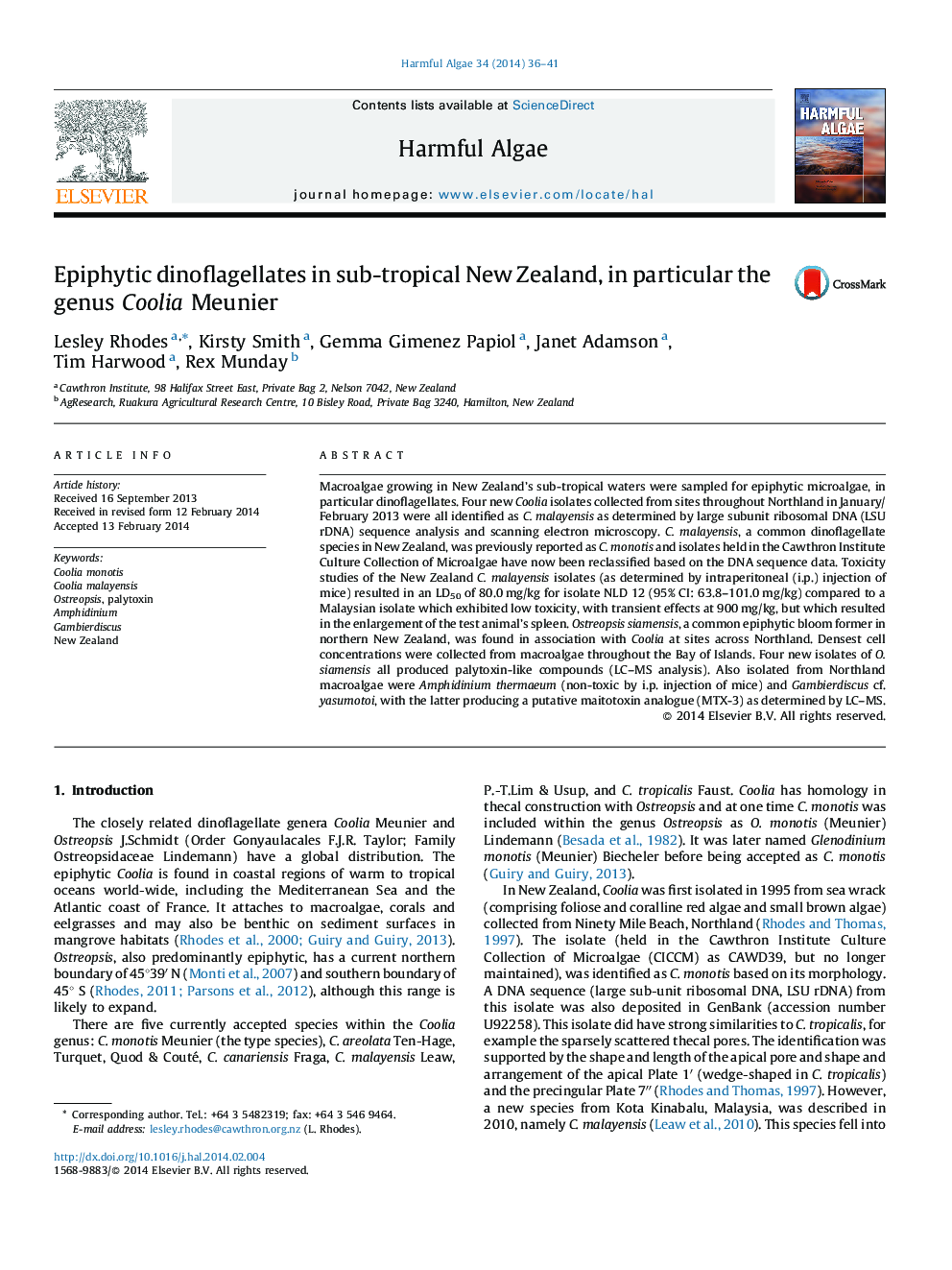| کد مقاله | کد نشریه | سال انتشار | مقاله انگلیسی | نسخه تمام متن |
|---|---|---|---|---|
| 4545403 | 1626937 | 2014 | 6 صفحه PDF | دانلود رایگان |

• Coolia malayensis is a common dinoflagellate species in New Zealand's sub-tropical northern waters.
• New Zealand C. malayensis isolates reported as C. monotis are reclassified based on analysis of LSU rDNA sequence data.
• The dinoflagellates Amphidinium thermaeum and Gambierdiscus cf. yasumotoi are new reports for Northland, New Zealand.
Macroalgae growing in New Zealand's sub-tropical waters were sampled for epiphytic microalgae, in particular dinoflagellates. Four new Coolia isolates collected from sites throughout Northland in January/February 2013 were all identified as C. malayensis as determined by large subunit ribosomal DNA (LSU rDNA) sequence analysis and scanning electron microscopy. C. malayensis, a common dinoflagellate species in New Zealand, was previously reported as C. monotis and isolates held in the Cawthron Institute Culture Collection of Microalgae have now been reclassified based on the DNA sequence data. Toxicity studies of the New Zealand C. malayensis isolates (as determined by intraperitoneal (i.p.) injection of mice) resulted in an LD50 of 80.0 mg/kg for isolate NLD 12 (95% CI: 63.8–101.0 mg/kg) compared to a Malaysian isolate which exhibited low toxicity, with transient effects at 900 mg/kg, but which resulted in the enlargement of the test animal's spleen. Ostreopsis siamensis, a common epiphytic bloom former in northern New Zealand, was found in association with Coolia at sites across Northland. Densest cell concentrations were collected from macroalgae throughout the Bay of Islands. Four new isolates of O. siamensis all produced palytoxin-like compounds (LC–MS analysis). Also isolated from Northland macroalgae were Amphidinium thermaeum (non-toxic by i.p. injection of mice) and Gambierdiscus cf. yasumotoi, with the latter producing a putative maitotoxin analogue (MTX-3) as determined by LC–MS.
Journal: Harmful Algae - Volume 34, April 2014, Pages 36–41